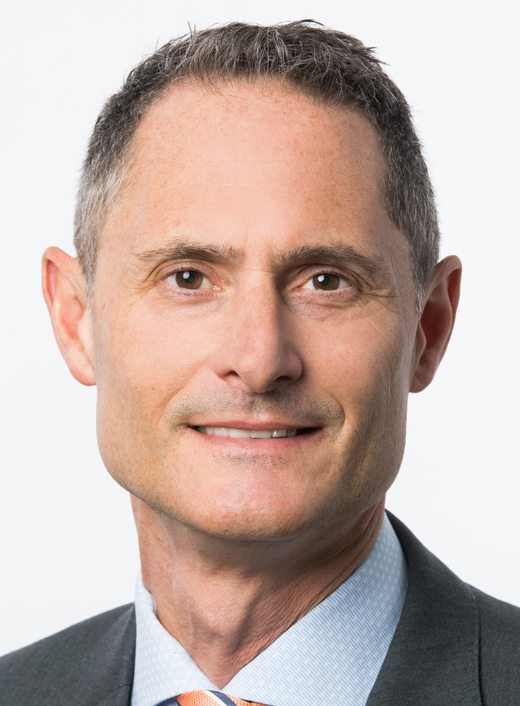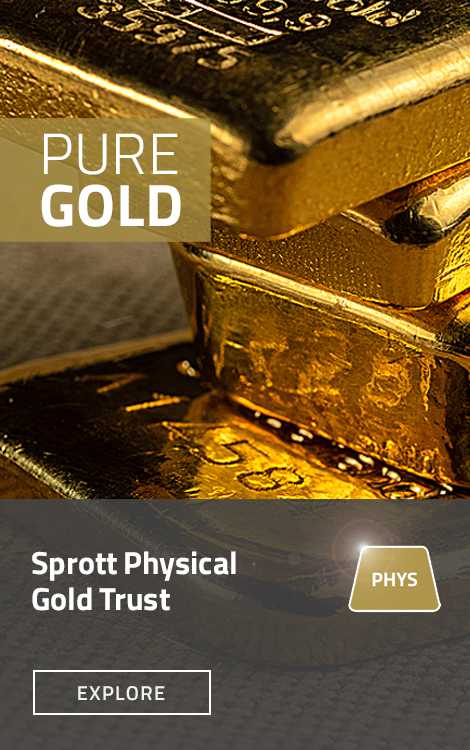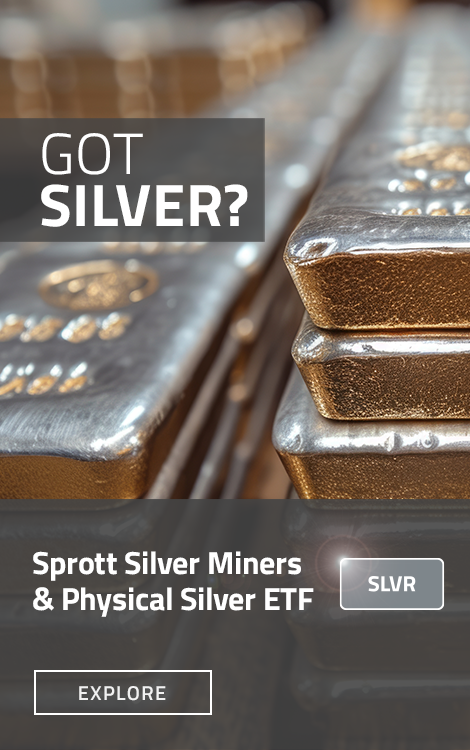James Connor, Bloor Street Capital, interviews John Ciampaglia, CEO of Sprott Asset Management, on the surge in investor interest and inflows into precious metals, particularly gold and silver, amid heightened market volatility and economic uncertainty. While gold has seen significant price appreciation and record-breaking investment flows, silver remains undervalued despite strong industrial demand and persistent supply deficits.
Video Transcript
James Connor: John, thank you very much for joining us today. How are things in Toronto?
John Ciampaglia: Things are good in Toronto. We are waiting patiently for spring, and given everything going on, we have been incredibly busy with the markets in the last few weeks.
James Connor: Now that's great. This is what I want to talk to you about. The Sprott name is synonymous with precious metals. Given the move we've seen in the past year in gold and silver, I thought it would be a good idea to talk to you to find out what you're seeing regarding flows into your various products. Sprott's largest product is the Physical Gold Trust, or PHYS. With gold up 25% on the year, give or take, what's the AUM now in that physical product, and how would the flows be?
John Ciampaglia: I'm very pleased to share that we recently crossed the $12 billion U.S. dollar mark. You may remember that on January 5 of this year, you and I sat down to do an interview in our office. You asked me questions about our gold trust and flows in the gold trust, and I said that while we did a little over $300 million last year, we were very disappointed with that number.
It was because gold performed incredibly well last year, and we thought investors weren't paying attention. I'm very happy to report that in the previous couple of weeks, we've had single trading days where we've raised more than $250 million. That is a pretty good sign that investors are finally paying attention.
The market appreciation of gold has been incredible this year. I think we're matching where we are year to date for last year's full calendar year. The appreciation and the price have accelerated. But more importantly, investors are finally participating by adding new capital to the sector, and we're getting our fair share of it.
James Connor: That's good to hear. Some of the daily moves in the price of gold are quite astounding. John, the following product I want to ask you about is the Physical Silver Trust, or PSLV. What's the AUM in this product, and what have the flows been like?
John Ciampaglia: I'm also pleased to report that the PSLV has recently crossed the $6 billion U.S. mark, making it the second-largest physical silver ETF1 in the world. We're quite excited that we've had good performance from there. We've had very good relative flows compared to the competitor.
However, I think it is important to highlight the differences in size between the two markets. We look at all the Gold ETFs around the world, and believe it or not, they now stand at $350 billion in collective AUM. To put the Silver ETFs into comparison, they're about one-tenth of that size, at about 35 billion. There’s a much smaller market for physical Silver ETFs, and as I said, we've got the second largest at $6 billion. Flows in the fund have been very positive for us this year. I think we're outperforming even our larger counterparts. That's a very good sign that people are focusing on funds that have 100% fully allocated metal segregated and stored outside the bullion banking system.
James Connor: I'm unsure if you can answer this question, but do you know who the buyers are and what jurisdictions they're from? Are they retail buyers or institutional buyers?
John Ciampaglia: One of the big challenges with ETFs is the transparency of the shareholder base. We talk to investors worldwide, from Do-It-Yourself Investors to advisors, RIAs and institutional investors. I would say we are having more and more conversations with wealth advisors.
I think that's being driven by their clients and some emerging portfolio risks people are trying to deal with. They're looking at precious metals again, many for the first time and many for the first time in years. I think that's helping to drive renewed interest and sales into many of these funds. It's, I believe, a global phenomenon because everyone's dealing with the same risks in the world right now.
Given its more traditional safe-haven characteristics, people are looking first and foremost at gold. Silver is a monetary metal, but it also has many industrial applications.
James Connor: You and your team are always on the road, marketing through North America and Europe. Do you get a sense that there's a lot more interest in the sector?
John Ciampaglia: I think emerging interest is just starting to formulate. We see that in the flows going into global gold and silver products, which we track daily. I believe, as I said, it's top to bottom. We recently had a discussion with a large pension fund that said they concluded they don't have enough precious metals in their portfolio, and they wanted to pick our brains on how to do that.
I think that is happening increasingly today, where institutions are saying the traditional role of bonds as a shock absorber to different shocks, whether it's equity volatility. Obviously, we've got this tariff and trade war emerging, and silver is not playing the same role as it once did. I think that's one of the reasons why gold has reasserted itself as a monetary metal: it is performing very well against the backdrop of incredibly high volatility and many risks that nobody thought about even three months ago.
James Connor: Every asset class seems to be under attack. Stocks, bonds, the dollar, and the only one hanging in there is gold.
John Ciampaglia: Gold has proven itself as a store of value over millennia. Throughout the financial calamities and dislocations of the last few decades, it has always been a safe, hard-harbor asset class in those kinds of storms.
Once again, I think gold is proving its worth by being resilient against volatility, including traditional reserve assets like U.S. Treasuries and the U.S. dollar, which have been very soft recently. I think investors are rotating to gold as an alternative asset class.
James Connor: Let's do a deeper dive on silver. Gold makes new highs every other day, but silver is nowhere near its all-time high. The fundamental backdrop for silver has never been better. Silver is the second most used resource in the world, second only to oil. It's used in over 10,000 different products and applications. Annual demand keeps increasing. It's at 1.2 billion ounces, far outpacing production. If the sector continues to run a deficit yearly, why is the silver price lagging compared to the gold price?
John Ciampaglia: It's a great question, and it is incredibly frustrating for us and our investors that silver is just not catching more of a bid here. If you look at the gold-to-silver ratio, a barometer of relative value between an ounce of gold and an ounce of silver, I think yesterday we hit 100:1.
You can buy 100 ounces of silver for every ounce of gold. That is about as extreme as I can ever remember seeing it. Even at 80, it's considered extreme, so 100 is really off the charts. It does reflect one, gold's incredible run, and two, silver just not participating to the same degree.
Why is it not participating? Well, as I mentioned earlier, it is an industrial metal. There is incredible anxiety and uncertainty about potential global recessions and trade wars, which are affecting many products made in China. If you consider solar panels, which China dominates, about 20% of the silver supply goes to solar panel production.
Some negative downdrafts on the industrial side are weighing silver down. The other element not propping up silver is that it's not a monetary metal held by central banks like gold. Central banks have been huge buyers of physical gold. In the last three years, they haven't accumulated silver because of the value-to-volume challenge with silver. We tend to see more retail accumulation of silver.
We are starting to see groups around the world shifting buying preferences from gold to silver. I think the one that is probably the most interesting is Indian investors. When gold prices get very elevated and out of reach for them to buy, they tend to shift their buying preferences to silver. We see huge amounts of silver shipped to India as a monetary asset. But the industrial side is weighing on it, and silver at around $32 an ounce, it's hard to say this, but we are still way off the highs of $50 that were achieved over 10 years ago.
It's hard to find a commodity still so far off its last high. Silver feels like it needs a big catch-up trade.
James Connor: A couple of points: You mentioned the gold-silver ratio at 100x right now, back in 2011, which was the last time silver peaked at $50. It was trading around 30x. It has a long way to go before it catches or achieves that same level. I also want to clarify that you discussed the industrial demand for silver. Just so I understand you, you're saying that because such a high percentage of the demand is used for industrial purposes, it's starting to trade more like oil and copper.
John Ciampaglia: It's a hybrid metal. Silver is a bit of a chameleon. When the economy is under stress or there's uncertainty about the economy, you find that silver starts trading more like copper, which is a key industrial metal. Right now, it seems to be more heavily influenced by the industrial side than the investment side.
I will share one stat that shocked me: I referenced those Gold and Silver ETFs globally earlier. We've seen some pretty significant inflows into Gold ETFs. Our last measure indicates that about $25 billion has gone into Gold ETFs year to date. If you compare it to the Silver ETFs globally, we're only at half a billion year to date. You can see the relative skew of investor flows going to Gold ETFs instead of physical Silver ETFs.
As I mentioned earlier, the relative sizes of those two categories are 10 to 1, but the flows are way skewed to Gold ETFs right now. We need more investors participating in silver to give it a boost for sure. The focal point is gold. Like we saw in 2020 during COVID, gold was the first mover. It broke out first. Then, a few months later, what did we experience? Silver caught up and slingshotted right by gold. We wouldn't be surprised if another dynamic played out at some point this year.
James Connor: I want to ask you about the silver price earlier in April. The silver price got hit relatively hard. It went from 30 bucks down to 27 bucks in a relatively short period of time, and it has recovered. But do you have any color on that move?
John Ciampaglia: It's very frustrating to see those kinds of intraday moves in silver, and they seem to be disproportionately being driven by the paper markets or the futures markets, where people are dumping huge amounts of silver through derivative contracts, often at funny times of the day when markets are thin. It feels like somebody is trying to move the price of silver around from time to time, which is very frustrating to see.
But as you mentioned, silver has bounced back and is behaving a little better. We see another dynamic happening with the proposed tariffs, which are not impacting bullion in the U.S. We've seen a little bit of a cooling down around this heavy shipment of silver from London vaults to COMEX vaults in the U.S. That potential arbitrage has dissipated, and we wouldn't be surprised if the flow of silver from Europe to the U.S. stops and starts to reverse. We may see some metal beginning to go back. But some of that has created noise and extra volatility in the silver price in the last few weeks.
James Connor: Well, that was a great overview, John, and I want to thank you very much for spending time with us today. If someone would like to learn more about Sprott and its various gold and silver products, where can they go?
John Ciampaglia: We encourage you to start your journey by visiting us at sprott.com. We have a ton of educational material and insights to help you educate yourself about these different categories. You can also phone our sales team. We have an 800-number on the line. If you want to speak to somebody to understand better what we're all about and some of the differences between our offerings, we'd encourage you to start your journey there.
James Connor: Once again, John, thank you.
John Ciampaglia: Thank you for having me. It was a great chat.
Footnotes
| 1 | ETF should be interchangeably read as “exchange-listed fund” as ETF, as used throughout the discussion, is not exclusively referring to registered, open-ended exchange-traded funds. |
Investment Risks and Important Disclosure
Sprott Physical Gold Trust (PHYS) and Sprott Physical Silver Trust (PSLV), collectively the "Trusts", are closed-end funds established under the laws of the Province of Ontario in Canada. The Trusts are available to U.S. investors by way of listing on the NYSE Arca pursuant to the U.S. Securities Exchange Act of 1934. The Trusts are not registered as investment companies under the U.S. Investment Company Act of 1940.
The Trusts are generally exposed to multiple risks that have been identified and described in each fund's prospectus. Please refer to each prospectus by clicking the following links for a description of these risks: PHYS and PSLV.
Relative to other sectors, precious metals and natural resources investments have higher headline risk and are more sensitive to changes in economic data, political or regulatory events, and underlying commodity price fluctuations. Risks related to extraction, storage and liquidity should also be considered.
Gold and precious metals are referred to with terms of art like "store of value", "safe haven" and "safe asset". These terms should not be construed to guarantee any form of investment safety. While “safe” assets like gold, Treasuries, money market funds and cash generally do not carry a high risk of loss relative to other asset classes, any asset may lose value, which may involve the complete loss of invested principal.
Past performance is no guarantee of future results. You cannot invest directly in an index. Investments, commentary and opinions are unique and may not be reflective of any other Sprott entity or affiliate. Forward-looking language should not be construed as predictive. While third-party sources are believed to be reliable, Sprott makes no guarantee as to their accuracy or timeliness. This information does not constitute an offer or solicitation and may not be relied upon or considered to be the rendering of tax, legal, accounting or professional advice.





